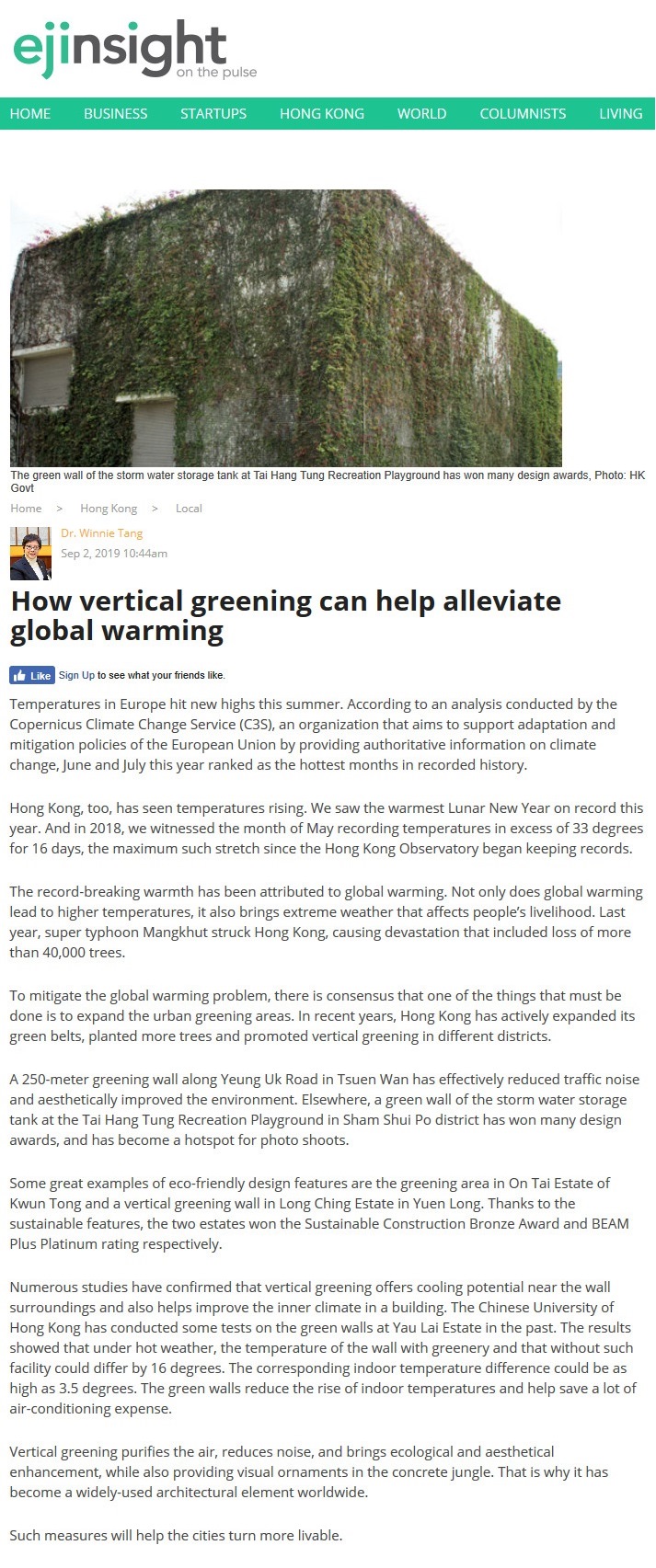網上版請按此

How vertical greening can help alleviate global warming
Temperatures in Europe hit new highs this summer. According to an analysis conducted by the Copernicus Climate Change Service (C3S), an organization that aims to support adaptation and mitigation policies of the European Union by providing authoritative information on climate change, June and July this year ranked as the hottest months in recorded history.
Hong Kong, too, has seen temperatures rising. We saw the warmest Lunar New Year on record this year. And in 2018, we witnessed the month of May recording temperatures in excess of 33 degrees for 16 days, the maximum such stretch since the Hong Kong Observatory began keeping records.
The record-breaking warmth has been attributed to global warming. Not only does global warming lead to higher temperatures, it also brings extreme weather that affects people's livelihood. Last year, super typhoon Mangkhut struck Hong Kong, causing devastation that included loss of more than 40,000 trees.
To mitigate the global warming problem, there is consensus that one of the things that must be done is to expand the urban greening areas. In recent years, Hong Kong has actively expanded its green belts, planted more trees and promoted vertical greening in different districts.
A 250-meter greening wall along Yeung Uk Road in Tsuen Wan has effectively reduced traffic noise and aesthetically improved the environment. Elsewhere, a green wall of the storm water storage tank at the Tai Hang Tung Recreation Playground in Sham Shui Po district has won many design awards, and has become a hotspot for photo shoots.
Some great examples of eco-friendly design features are the greening area in On Tai Estate of Kwun Tong and a vertical greening wall in Long Ching Estate in Yuen Long. Thanks to the sustainable features, the two estates won the Sustainable Construction Bronze Award and BEAM Plus Platinum rating respectively.
Numerous studies have confirmed that vertical greening offers cooling potential near the wall surroundings and also helps improve the inner climate in a building. The Chinese University of Hong Kong has conducted some tests on the green walls at Yau Lai Estate in the past. The results showed that under hot weather, the temperature of the wall with greenery and that without such facility could differ by 16 degrees. The corresponding indoor temperature difference could be as high as 3.5 degrees. The green walls reduce the rise of indoor temperatures and help save a lot of air-conditioning expense.
Vertical greening purifies the air, reduces noise, and brings ecological and aesthetical enhancement, while also providing visual ornaments in the concrete jungle. That is why it has become a widely-used architectural element worldwide.
Such measures will help the cities turn more livable.
Dr. Winnie Tang
Adjunct Professor, Department of Computer Science, Faculty of Engineering and Faculty of Architecture, The University of Hong Kong